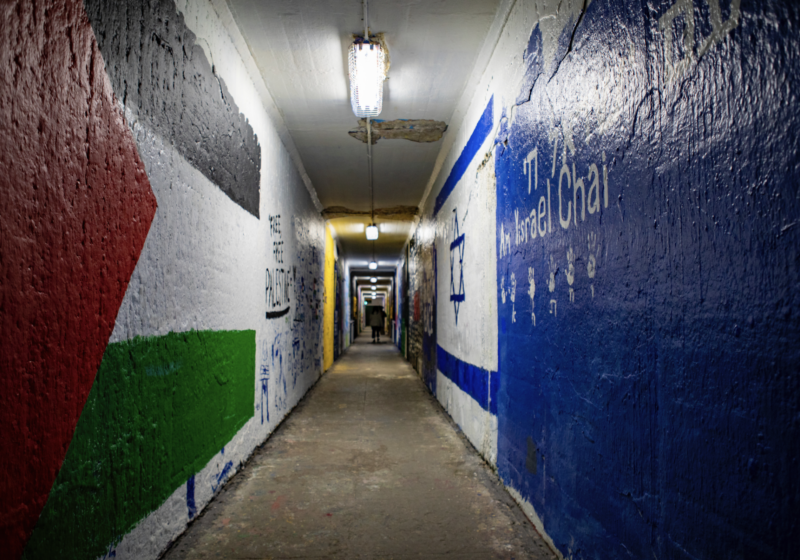To raise awareness and foster dialogue about the hijab and Islam, students and faculty from across religious and cultural backgrounds wore hijabs and stickers in support of “Hijab for a Day” on Wednesday, April 2.
The event was organized by the Students’ Association for Interfaith Cooperation (SAIC) and the Muslim Students’ Association (MSA). It was a part of MSA’s Islam Awareness Week, which runs from April 2-10. The event was partially inspired by the global “World Hijab Day” campaign that occurs annually on February 1.
“We see religious and cultural diversity on our campus, and we’re often curious about it, but we feel intimidated to ask questions about it,” SAIC President and junior Fatima Bawany said. “I’m hoping this event makes the hijab something that people feel is more of an approachable subject.”
The event, which was open to students and faculty members, had 65 registered participants. However, the event organizers estimate that nearly double that number unofficially participated.
“The participation level goes way beyond what I had expected,” MSA Secretary and sophomore Hiba Zafar said. “As a Muslim student who wears the Hijab, it’s great to see how supportive of a community Rochester is.”
Participants could choose to wear a sticker of support or a hijab. Donations of hijabs were collected from the local Muslim community. Junior and SAIC Publicity Chair Samantha Merrill elected to wear the Hijab.
“I [could] tell you the reasons why women choose to wear it, but there’s a big difference between knowing it intellectually and experiencing it myself,” Merrill said. “I wanted to know how people would respond to me wearing a hijab and whether I myself would feel any different wearing it.”
In addition to Tuesday’s main portion, MSA and SAIC incorporated a Meet & Greet informational session on Monday evening. During this session, participants learned about the significance of the hijab to Muslim women and Islam, met other participants, and shared their motivations.
“Our goal is to make sure that our participants are as informed as possible, so that if someone asks them a question about the hijab in the future or during this event, they are able to understand what it actually signifies,” Bawany said.
Both Bawany and Zafar believed that the biggest challenge for participants, particularly those wearing the hijab, would be dealing with questions and unwanted attention. However, this hasn’t been the case thus far.
“I haven’t really gotten any strange looks or comments,” Merill said. “I guess it’s been a bit surprising that people aren’t asking me about it.”
The event will conclude Tuesday evening with a reflection where participants will be able to share their experiences and the way their perspectives may have changed. The organizers are optimistic that both participants and nonparticipants will learn and benefit from the event.
“I really hope they come out feeling more comfortable with the topic of hijab, and if they have any friends who wear it, they’ll be able to show their support and respect for those women,” Zafar said.
Bawany shared similar sentiments. “Aside from learning more about the hijab, I hope that this will help students feel more comfortable approaching topics related to religion,” she said. “I think when we learn to dialogue with each other about sensitive topics in a respectful way, this helps us understand each other on a much deeper level.”
Hansler is a member of the class of 2015.





